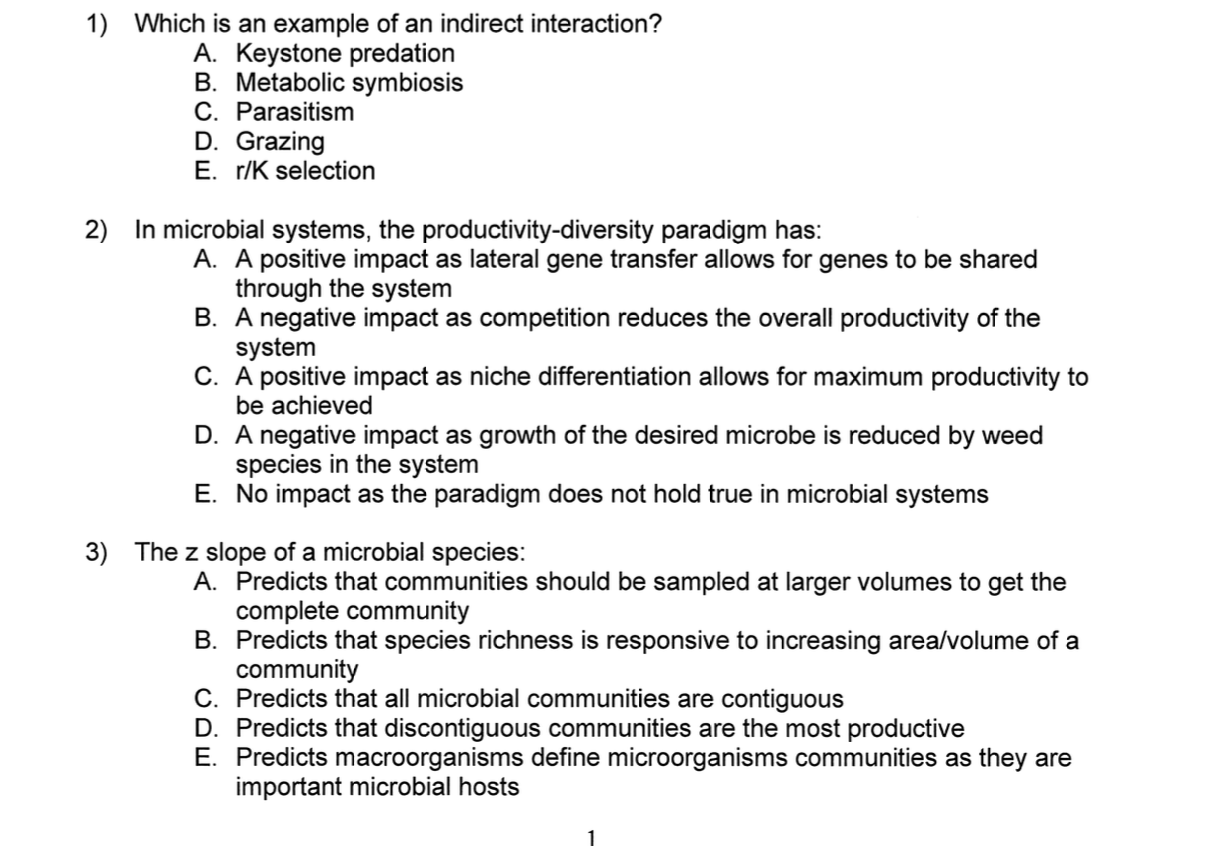1) Which is an example of an indirect interaction? A. Keystone predation B. Metabolic symbiosis C. Parasitism D. Grazing E. r/K selection 2) In microbial systems, the productivity-... 1) Which is an example of an indirect interaction? A. Keystone predation B. Metabolic symbiosis C. Parasitism D. Grazing E. r/K selection 2) In microbial systems, the productivity-diversity paradigm has: A. A positive impact as lateral gene transfer allows for genes to be shared through the system B. A negative impact as competition reduces the overall productivity of the system C. A positive impact as niche differentiation allows for maximum productivity to be achieved D. A negative impact as growth of the desired microbe is reduced by weed species in the system E. No impact as the paradigm does not hold true in microbial systems 3) The z slope of a microbial species: A. Predicts that communities should be sampled at larger volumes to get the complete community B. Predicts that species richness is responsive to increasing area/volume of a community C. Predicts that all microbial communities are contiguous D. Predicts that discontiguous communities are the most productive E. Predicts macroorganisms define microorganisms communities as they are important microbial hosts

Understand the Problem
The question is focused on ecological concepts related to indirect interactions, microbial productivity, and species richness in microbial communities.
Answer
1) Keystone predation; 2) Positive impact via niche differentiation; 3) Species richness responds to area/volume.
- Keystone predation is an example of indirect interaction. 2) In microbial systems, the productivity-diversity paradigm has a positive impact as niche differentiation allows for maximum productivity to be achieved. 3) The z slope of a microbial species predicts that species richness is responsive to increasing area/volume of a community.
Answer for screen readers
- Keystone predation is an example of indirect interaction. 2) In microbial systems, the productivity-diversity paradigm has a positive impact as niche differentiation allows for maximum productivity to be achieved. 3) The z slope of a microbial species predicts that species richness is responsive to increasing area/volume of a community.
More Information
Keystone predation influences other species indirectly by affecting species that control community structure. Niche differentiation in microbial systems maximizes productivity. The z slope theory indicates species richness increases with area/volume.
Tips
Ensure understanding of ecological concepts and terminologies when solving these types of questions.
AI-generated content may contain errors. Please verify critical information